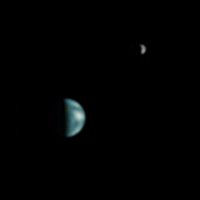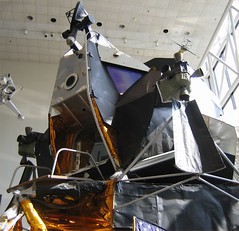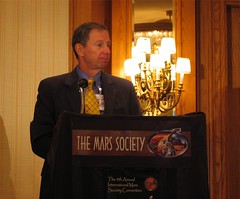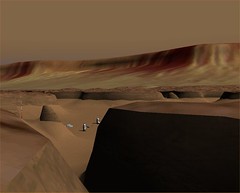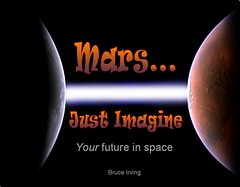
I'm nearly through with an educational spin-off project arising from the Mars for Less add-on project for Orbiter and the Mars Society Conference (MSC) presentation I made in Washington a few weeks ago. It was actually inspired by a presentation I saw at MSC by author Tom Hill. He had worked with an illustrator named Marilyn Glass to write I Want To Go To Mars, a book for very young children (age 3-7 I believe). Although the book is nicely done, and I bought a copy for my Mars collection, it's also very brief and simple. While this is a requirement for the target age group, what about something more detailed for older kids? I started thinking about this, and with PowerPoint as my palette, and Orbiter as my "brush," I started to write Mars... Just Imagine (Your Future In Space). My thought is that it's suitable for kids age 8 and up, and considering that most adults don't know very much about the possibilities of people going to Mars, it might be useful for anyone who wants to start thinking about this in a relatively painless way.
It's almost done, with 17 pages of pictures and text, plus a dozen pages of more detailed background information for each page, what it depicts, how it was made, references, credits, etc. I haven't decided yet how to distribute it. Most likely it will be a free PDF download (as is my earlier e-book Go Play In Space), but I'm also looking into various print-on-demand services, since a children's book seems to be more of a "sit on my lap" item than a computer screen document. I've put the cover (above, thanks to Jason Archer for the graphic) and two sample pages on my Flickr site as a sort of preview.
September 3 Update: The first version of Mars... Just Imagine has been posted here (3 MB PDF) at www.kids4mars.com.



